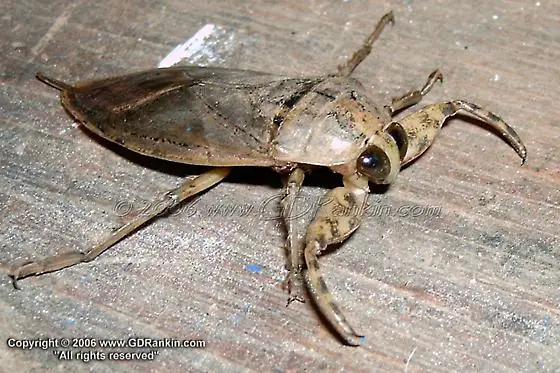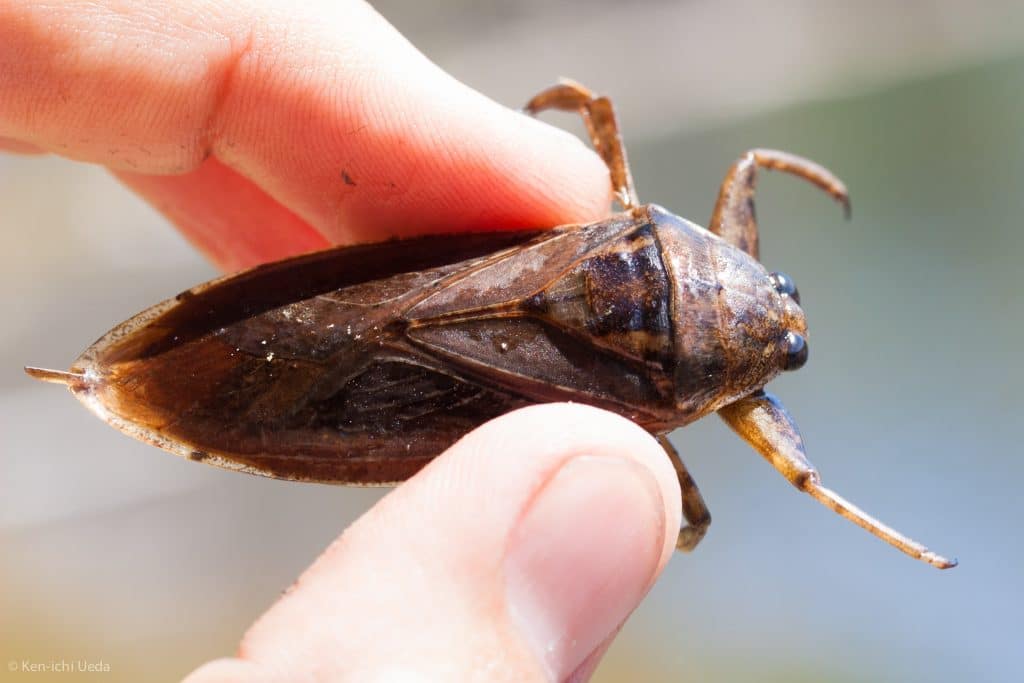One study found aquatic insects giants that can cause painful bites are invading the Mediterranean island of Cyprus.
The giant aquatic insects of Cyprus
Giant aquatic insects, also called “toe biters,” belong to the genus Lethocerus, which includes bird species that can reach a length of about 12 centimeters. Researchers discovered the fearsome insects with the help of swimmers on the east coast of the island and warned the public to watch out for others.
“Cypriots should keep their eyes open and their toes out of the water,” the study authors said in a March 20 statement. The researchers presented their findings in a study published December 31, 2023 in the Journal of “Grigore Antipa” National Museum of Natural History.
“Cypriots should keep their eyes open and their toes out of the water,” the study authors said in a March 20 statement. The researchers presented their findings in a study published December 31, 2023 in the Journal of “Grigore Antipa” National Museum of Natural History.
According to the National Park Service, giant aquatic insects live in freshwater habitats such as ponds and swamps around the world. They have pincer-like appendages and poisonous saliva, which allows them to immobilize and suck liquid from their prey. These insects are also known to bite unsuspecting humans between the toes, which is why they are called “toe biters,” even though this bite is non-toxic and we are too large to be their prey.
Lethocerus is found near Cyprus in the mainland countries of Turkey, Lebanon, Israel and Egypt, but has never been observed on the island before. In the new study, the team examined posts on local Facebook groups between 2020 and 2021 to collect data on bugs and learn more about their sudden arrival.
“The documents reported in this study were based almost entirely on people who posted photographs and videos on social media groups requesting species determination,” the authors wrote in the study.
Seven giant water bugs have been recorded in the eastern lowland part of the island, and researchers went and found two such specimens. The recovered insects belonged to the species Lethocerus patruelis, which can reach a length of about 3 inches (8 cm). However, the team could not identify the species of the remaining insects from photos alone and therefore recorded them as Lethocerus.

Researchers suspect the insects arrived from land, but are unsure why they crossed the open sea. One theory is that the lights on the island’s east coast attracted the insects. Another idea is that the insects migrated to the island to forage for food or were transported there by the elements.
“The specimens landed exhausted on the coast, or in some cases at sea, which may indicate that they were relocated by wind or sea currents from neighboring countries,” the authors wrote.
Although the researchers are confident that these insects are new to the island, and that more could be added, they do not think that Lethocerus is a threat to Cyprus’ ecosystem. The country has similar habitats to land and is home to some of the insect’s natural predators, including the white stork (Ciconia ciconia) and the black kite (Milvus migrans).
“This could ensure biological control of a possible established population,” the authors wrote.
These giant aquatic insects are formidable underwater predators. While hunting, giant aquatic insects breathe using a siphon located in the back that acts as a mouthpiece.
The giant aquatic insect positions itself upside down on the stem of a submerged plant and hunts by ambush, capturing tadpoles, small fish, frogs, snails and aquatic insects. It captures prey with its grasping front legs before piercing the body with its sucking mouthparts.
They fly between hunting sites and are attracted to lights, including car headlights. They have been known to occasionally bite humans when disturbed – a very painful experience.
What do aquatic insects look like? The giant aquatic insect looks like a hybrid cockroach and praying mantis. It has a flat, brown body with light, lacy wings that harden at the base. The most distinctive features of the insect are two large front legs that resemble pincers. It uses these powerful limbs to grab and subdue prey.

All Belostomatidae insects have needle-like cylindrical bills for biting and eating. The bite of the giant aquatic insect injects poisonous digestive enzymes into the prey. These compounds paralyze the victim and liquefy muscles and tissue. The giant aquatic insect sucks up this fluid.
The size of the giant aquatic insect varies depending on the species. The Lethocerus americanus species is the largest true insect in the United States and can reach 4 inches in length. Other species average 1 to 2½ inches in length.
Can aquatic insects fly? The giant aquatic insect flies between habitats. You may also spot aquatic insects flying around porch lights, street lamps and other lights at night.
What do aquatic insects eat? The aquatic insect is a predator that sets ambushes and nests in plants near the surface of ponds and streams. It grabs passing prey with its strong claws and immediately injects its venom. This powerful hunter can trap and feed on creatures up to 50 times bigger than him.
The giant aquatic insect’s diet includes shrimp, insects, fish and frogs. It can also eat young snakes and turtles.
What is the life cycle of aquatic insects? Aquatic insects have elaborate mating rituals that involve dancing and fighting underwater. Females of the genus Lethocerus lay their eggs on vegetation above the water surface. On the contrary, females of the Abedus and Belostoma genera deposit their eggs on the backs of male aquatic insects. The males protect the eggs from predators and carry them until they hatch.
The eggs hatch in one to two weeks and the young aquatic insects mature in one to two months. The average lifespan of the aquatic insect is about a year.
There are dozens of species of giant water bugs around the world, but you may encounter only one or two types depending on your location. Here are some species:
American Lethocerus. You can find this giant aquatic insect in most regions of North America. This insect lives in streams, swamps, ponds, streams and other bodies of water. It survives the winter by living in the mud.
Lethocerus indicus. This aquatic insect lives in Taiwan. Humans often cook this insect into sauces or steam it and eat it as a delicacy.
Lethocerus uhleri. This species has streaked middle and hind legs. It lives in many regions of North America, including Canada, the eastern United States, and Mexico.
Aquatic insects live in the United States and other areas of North America. You can find various species in Georgia, Florida, Kansas, Maine, Mississippi, Nevada, Texas, Utah and many other states.
These insects typically live in slow-moving bodies of water filled with aquatic prey. Aquatic insects can also fly into swimming pools and congregate outside residential areas with bright lights.
Giant water bugs generally don’t enter homes, but you may notice them in your pond or pool. They often hide under vegetation beneath the surface of the water.
Many people confuse giant water bugs with cockroaches. You can tell the difference between these two insects by looking for the antennae. Cockroaches have long antennae, while giant aquatic insects have none.
Stagnant bodies of water, such as ponds and puddles, can attract aquatic insects to your yard. And leaving outside lights on at night can cause a swarm of aquatic insects outside your home.

Giant water bugs can harm humans and pets with their venomous bites.
Do aquatic insects bite? A giant water bug can bite you if you accidentally pick it up or step on it. This bite can cause extreme pain, but experts generally do not consider this injury medically dangerous.
Symptoms of a giant water bug bite include:
Intense pain
Mild to severe swelling of the affected area
Tingling in the bitten limb
In rare cases, a bite from a giant water bug could cause an allergic reaction that leads to difficulty breathing, hives, and itching. See a doctor if you experience these symptoms after a bite.
Most aquatic insect bites resolve within five hours without medical intervention. Home methods for treating aquatic insect stings include:
Wash the bite wound
Taking over-the-counter painkillers
Application of triple antibiotic ointment
Apply ice to the wound to reduce swelling
One case study reports that taking antihistamines did not relieve symptoms.
You can get rid of giant water bugs by replacing blue outdoor lights with yellow bulbs, which are less likely to attract these insects.
You can prevent giant water bugs from entering your home by sealing cracks and holes in window siding and screens. A pest control professional can also help you get rid of giant water bugs.
#Giant #footbiting #aquatic #insects #discovered